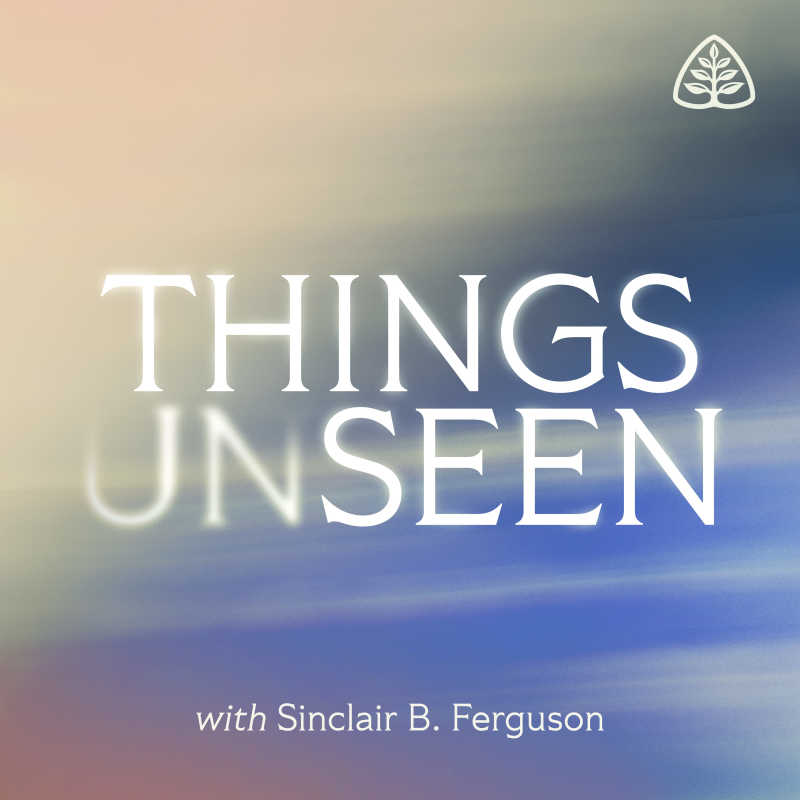John Saw and Believed

Racing to the empty tomb, John found Jesus’ graveclothes inside. But it wasn’t until he saw Jesus’ facecloth, neatly folded and by itself, that John believed. Today, Sinclair Ferguson considers the significance of this peculiar detail in Scripture.
Transcript
Yesterday, we began to think together about people Jesus encountered after His resurrection. We know that John was among them, and I want to think about him today. But I want to go back a little in time to the garden where Jesus had been buried in the tomb of Joseph of Arimathea.
You remember that when Mary Magdalene told Peter and John that the body of Jesus had been moved, they both ran to the garden, and there is a delightful little human touch in John’s gospel at this point. John tells us he beat Peter there, and he looked in and saw the linen grave cloth. And Peter, who is always mentioned first in the gospel stories, came second in the race, but still he was first to go right into the tomb, perhaps breathlessly running past his friend. And it seems he saw something that John hadn’t at first noticed: “He saw the linen cloths lying there.” Those same words are used to describe what John had seen, but then Peter saw something else: “And the face cloth, that had been on Jesus’ head, not lying with the linen cloths but folded up in a place by itself.”
Did Peter say something to John, or stay in the tomb staring, or come out to let John in? Well, we don’t know what Peter did, but we do know what John did when he went in. It’s at this point that John’s gospel makes the comment, “And he saw and believed.” But he had seen before. Why did he only believe now? Why was that? John says they didn’t yet understand the Scriptures that said Jesus would rise from the dead. Up to this point, they hadn’t fully understood the prophecies about Jesus, but now things were beginning to fall into place.
And it looks as though the trigger was that John now saw not only that the grave cloths were there, but also that the face cloth was not lying with the linen cloths but was folded up in a place by itself. At the very least, this was a sure sign the body had not been stolen. We’re not told how the grave cloths were left, but the face cloth was neatly folded up. Now, it doesn’t make any sense to unwrap a corpse if you’re stealing it, and maybe that thought didn’t immediately cross his mind, but the neatly folded-away face cloth, that could only mean one thing.
I’ve sometimes wondered about this detail in John’s account because most of us have little habits that mark us out. And I wonder: Was there something familiar about the way Jesus broke bread that made the two disciples on the road to Emmaus think, “Oh, it’s Jesus, it’s Jesus”? And could it have been the same with this folded cloth? Had they seen Jesus lie down to sleep some nights and carefully fold up His neck cloth? Or had they perhaps been in His carpenter shop at the end of the day and noticed how He took off the sweat cloth He wore around His neck or His forehead and, when He’d finished His work, carefully folded it up and put it in the same place every day? And hadn’t the Carpenter said that when His enemies destroyed the temple—meaning His body—in three days, He would rebuild it? That’s actually what He had done. It was as if He had folded away the sweat cloth that had been soaked in the blood of his labor.
Well, maybe that’s the case, maybe not, but the important point is this: Jesus left evidence behind that He was risen from the dead and was alive. Sometimes He leaves other evidence of His risen presence, doesn’t He? The circumstances and events into which He sovereignly brings us, the people we meet, the joys and sorrows that seem to say to us, “Jesus has been here before you, and He has left these evidences that He’s at work in your life to bring you to Himself and to bring you to live for His glory.”
You and I haven’t seen what John saw. But aren’t the footprints and the fingerprints of Jesus still leaving evidences of His risen presence in our lives as well? Perhaps, for us too there is much in life and in Scripture that we don’t yet fully understand. But like John, we’ll discover more and more that Christ has risen and plans to make Himself known to us and to lead us into the future, and that’s the very good news of the gospel.

